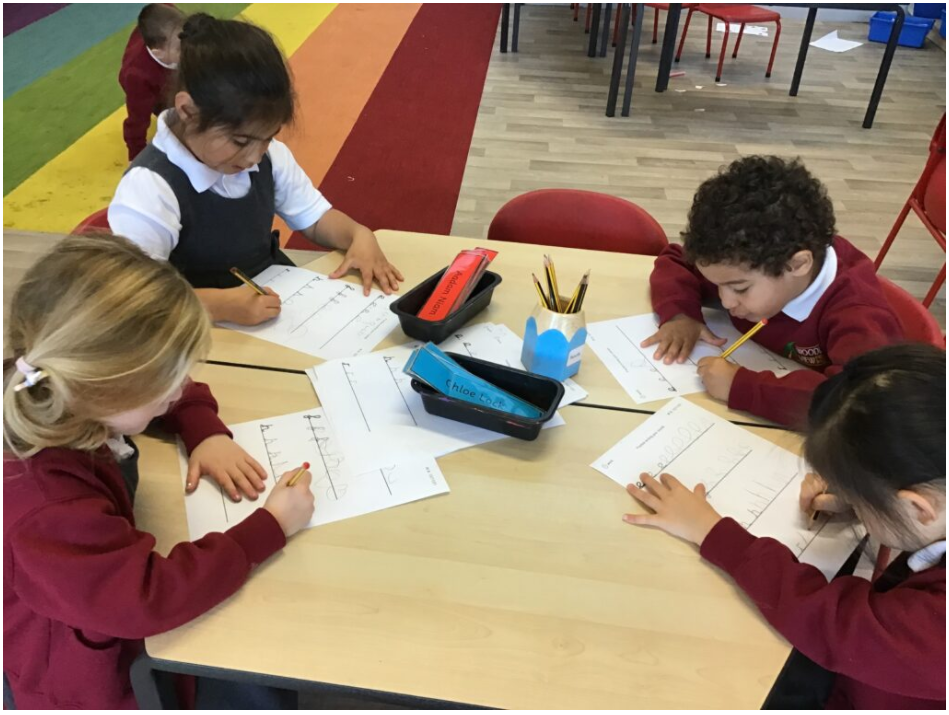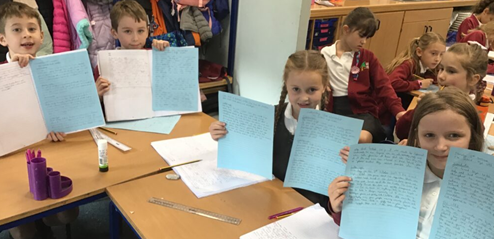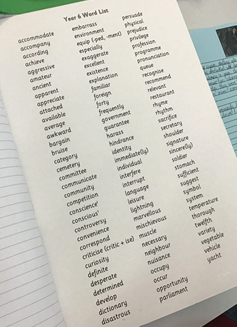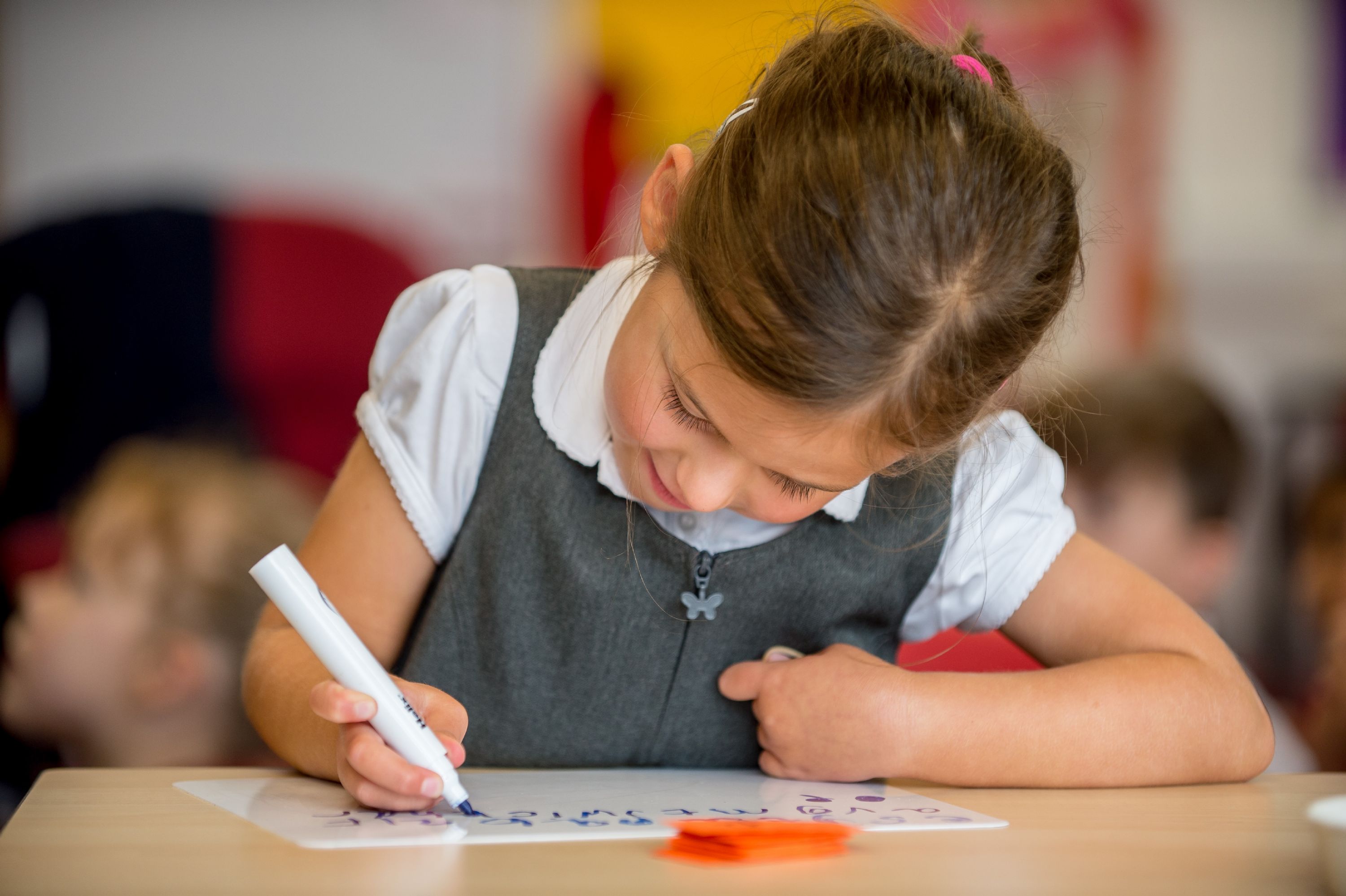Writing
English teaching is either linked to quality texts or the children’s current theme. Throughout their time at Woodland View, children learn to write for different purposes and audiences by working within a range of genres. We often deliver units through whole book studies (Read into Writing) where all of the children receive copies of the book to guide their learning. Additionally, we use Literacy Shed+ as a resource to deliver units based on fantastic texts and short films to inspire the children.
In our English lessons, we incorporate drama and use technology, including our amazing Immersive Room and Now Press Play headphone experiences, to deliver activities. Age appropriate grammar rules are embedded into daily teaching and referred to regularly.
Our bespoke exercise books include year group specific writing non-negotiables which are reinforced throughout the year. Displays are used effectively in each classroom to further support the children; these include working walls, helpful resources and great examples of work. Vocabulary is a high priority in all lessons; keywords are promoted in each lesson and displayed on classroom boards in blue.
Each term, children will complete a Grammar assessment test (from our PiXL assessment system) and teachers will record attainment, conduct a Question Level Analysis and informal assessment methods to identify gaps and steer planning. Teachers and Teaching Assistants are involved in delivering targeted extra support through interventions based on information gathered in assessments.
Handwriting
Handwriting is an important skill that our children need to develop to allow them to communicate their ideas. It is important that children develop their gross and fine motor skills too. Children will experience activities where they develop pincer grips, cutting skills, following lines and circles; this is all a precursor to writing letters. In Foundation Stage and Year 1, the children follow the Read Write Inc guidance for letter formation and handwriting. This is taught to the children as part of their daily phonics sessions. Once letter formation is secure in Year 2, children will begin to ready their handwriting for joining.

In Key Stage 2, children begin to develop a joined cursive style of handwriting. Regular handwriting sessions are carried out in each class (three times a week) to further develop and secure this style throughout the school.
Blue Writes
Each term, our children produce Blue Writes. A Blue Write is the outcome of a writing unit where children have learnt how to write in a particular style. This process may include: analysing model examples, learning appropriate grammatical features, taking part in drama activities, planning and drafting ideas, writing a full text in a particular style, responding to feedback, self-evaluating then producing the final Blue Write piece which is an innovation of the learning from that unit of work. These are usually done twice a half term and are an opportunity for the children to demonstrate their new skills and understanding. Teachers use the Blue Writes to track children’s progress in writing. Teachers and Teaching Assistants are involved in delivering targeted extra support through interventions based on information gathered.
 .
.
Spellings
Children in FS and KS1 are taught spellings through their phonics sessions, linked to the spelling pattern or sound that they are learning through their books that week. From Y2 (once children are no longer on the phonics scheme), we use Spelling Shed as a scheme to develop the children’s spellings in school through taught sessions and games. Children are taught spelling patterns, not words as this allows them to apply patterns or suffixes to other words too, rather than just a discrete set of words. Spellings are taught throughout the week in at least three sessions a week.
Learning new spellings involves a vast amount of knowledge:
● Phonological knowledge - knowing the phonemes (sounds) and the graphemes (letters) to represent them.
● Orthographic knowledge - which letter sequences are both possible and plausible
● Morphological knowledge - study of the form of words and the parts that make them up.
(smallest chunk of meaning) e.g. tri-cera-tops tri = three - can then apply ‘tri’ to other words.
● Etymological knowledge - the origin of words - it explains why
E.g. photograph - photo = Greek root meaning light, graph = Greek root meaning writing, ph is a Greek spelling of the phoneme /f/
● Visual knowledge - mental lexicon - a store of words we know and are committed to memory - all of the above help to build that to it. It is much better when meaning can be attached to the pattern.


We challenge the children to include the words they are learning in their writing, to add them to model texts, ask the children to spell words for us in shared writing, and so much more! The more that the children are exposed to the patterns and rules, the more chance the children have of retaining it!
Spelling shed is also an online resource that is also utilised at home; children are encouraged to play games to further develop and embed their spelling knowledge and understanding. Additionally, recommended word lists for each year group are printed in the back of our bespoke exercise books so that children can incorporate these into their work too.


